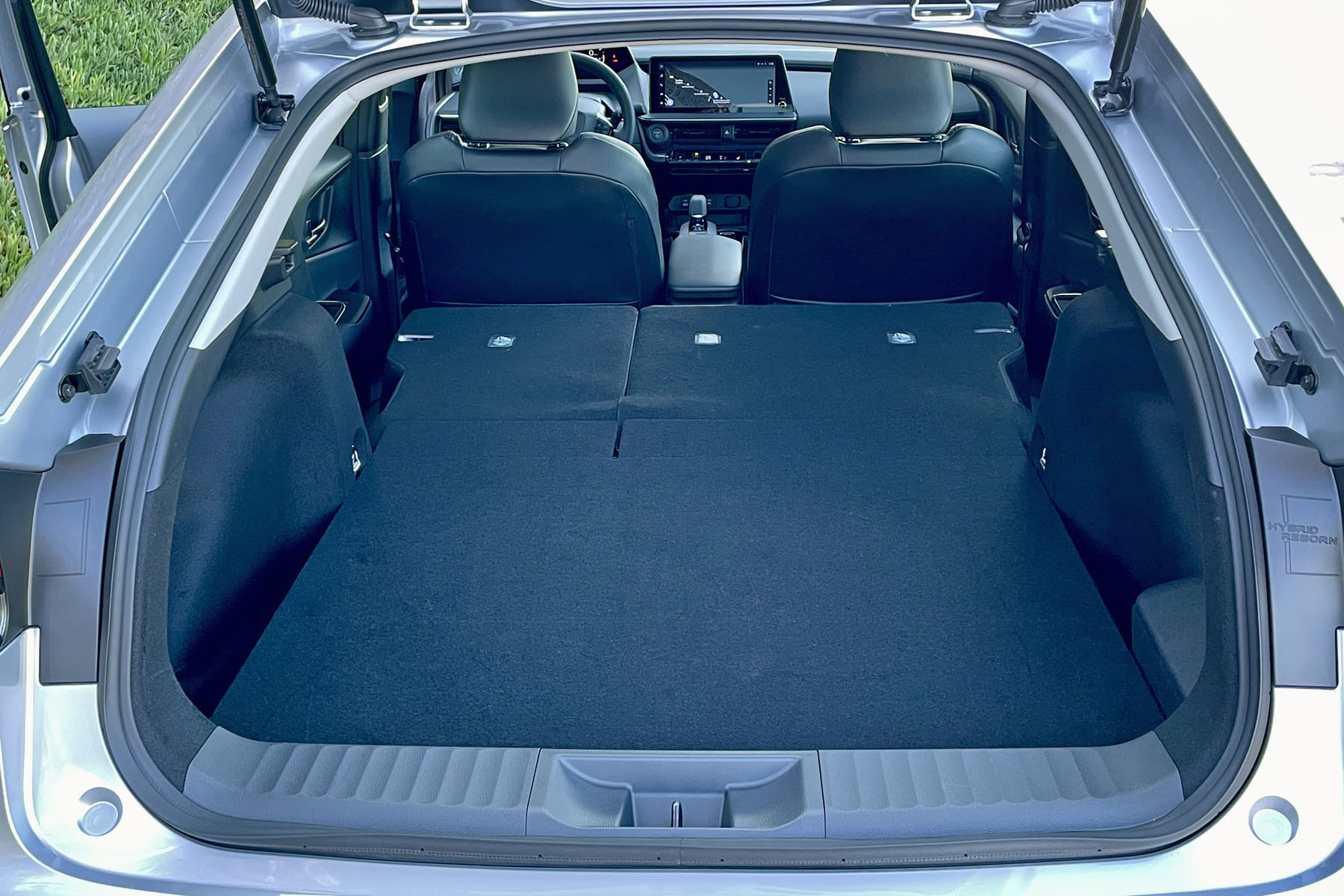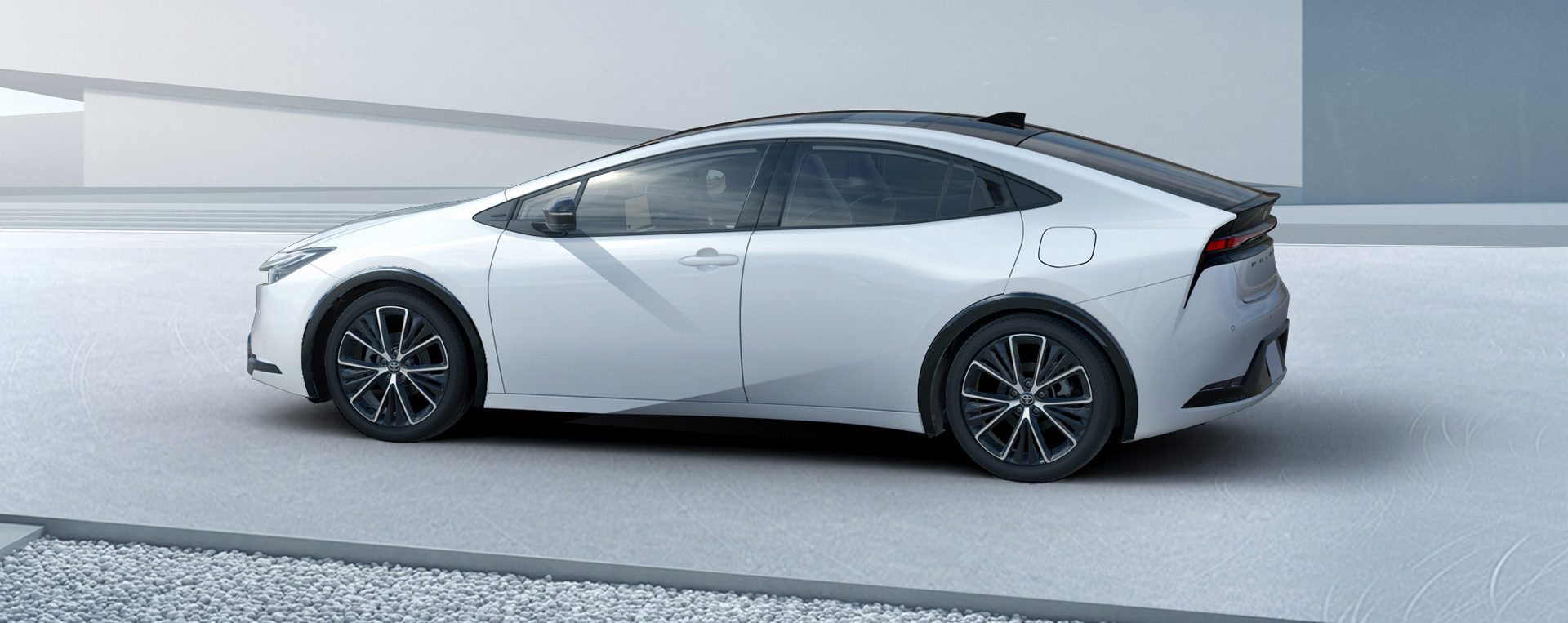Mention the Toyota Prius and people typically begin to yawn. While it has always been frugal, sipping its fossil fuel in tiny amounts, it was just such a boring drive. Well, that all changes with the launch of the fifth-generation model. The irony is the original plan was to make another “taxi,” but, mercifully, that never happened. As a result, this time around the Prius gets more of everything, not the least of which is a needed infusion of style.

2023 Toyota Prius
The biggest change, sassy new looks aside, is found in the hybrid powertrain. The old 1.8-litre four-cylinder engine has gone in favour of a larger 2.0L unit. This bumps the engine’s contribution to 150 horsepower and 139 pound-feet of torque, which is a 60 per cent improvement. The electric side has also been fully reworked. The motor generator two now twists out 111 hp and 152 lb-ft of torque. Finally, the rear electric motor adds another 40 hp, which is up from a measly seven. The final element is an all-new lithium-ion battery.
For Canada, there are two big plusses. First, the rear motor not only adds an all-wheel-drive (AWD) extension, it now works across the entire speed range. The previous setup ceased to function at 70 km/h. Second, unlike the US, Canada will only get the Prius with AWD.

2023 Toyota Prius
All of that work sees the net system output soar to 196 horsepower, which is a massive improvement over the previous model’s 121 hp. Toyota does not give a net system torque number, but the new Prius has more punch off the line, so it has to be up significantly as well. The injection of power chops the run to 100 km/h from 10 seconds for the outgoing model to a respectable 7.2 seconds, and it does so without sacrificing fuel economy.
On the drive route, the Prius AWD returned 4.4 L/100 km, which was 0.4 L/100 km better than the official number. What surprised me is it returned this efficiency without being driven with an eye to fuel economy.

2023 Toyota Prius
There are four driving modes — Eco, Normal, Sport and Custom. Forget Eco, as it blunts everything to the point where it feels like the old Prius. Normal proved to be the best overall mode, even when running a series of switchbacks. It’s crisp and responsive, yet efficient. Sport mode does sharpen things, but it also increases the engine’s rpm. This is done to keep it on cam and ready to respond when the driver hits the gas. However, its use also increases fuel consumption.

2023 Toyota Prius
Another pleasant surprise comes in the form of the manner in which the Prius now handles. The stiffer platform gives the front strut and multilink rear suspensions a solid base. The ride is noticeably firmer, but not uncomfortable so. It still manages to absorb road irregularities in stride, but it does a much better job of controlling unwanted body roll.
Likewise, the steering has a more refined feel that turns off-centre in a crisp, linear manner and the brake pedal is not as mushy under foot. In the end, the Prius is sneaking up on dynamic. No, it will not be mistaken for a sports car, but for a hybrid that returns stellar fuel economy it is a truly entertaining drive. That’s something that couldn’t be said of the four previous generations!

2023 Toyota Prius
Inside, the cabin takes equally large strides forward. The materials are classy, the seating is comfortable and the technology is bang on. In the US, Prius will be offered with an attractive ivory finish, in Canada it comes one way and that’s basic black. The saving grace is the mood lighting helps to break up the monotony. Likewise, the new digital instrumentation and multimedia screens provide the eye-candy and better functionality.
The instrumentation has been moved away from the driver and now stands proud atop the crash pad. In spite of the lack of a binnacle it does not wash out in bright sunlight and it delivers all of the information in a clear, concise manner. This includes showing a turn-by-turn pictogram when an instruction nears. Sadly, it only works with the native navigation system.

2023 Toyota Prius
As for the infotainment system, the base XLE arrives with an eight-inch multimedia screen; the top Limited model gets a much better 12.3-inch screen. This format gives everything more breathing space, so it is easier to pick off a function. It also works with a solid eight-speaker JBL sound system. Finally, the voice command system is much smarter. Simply say, “Hey Toyota, turn on the wipers” and that’s exactly what happens.
For the rear seat riders, the 50-mm stretch in the wheelbase brings more space. There’s now ample headroom and lots of legroom to go along with 575-litres of cargo space. Now, that is less than the outgoing model, but the area is nicely squared off. Toyota do not give a seats-down number, but visually it more than doubles and the load floor is flat.

2023 Toyota Prius beside the 2022 version
The new Prius hybrid represents a significant improvement over the past model. It’s much better looking, it has sorted handling and rewarding power yet it sticks to its green mandate and delivers great economy.
The 2023 Toyota Prius will arrive early 2023. The XLE AWD is priced at $36,490 with the top Limited AWD commanding $42,990. The Prius Prime PHEV should launch in the third-quarter of 2023.






